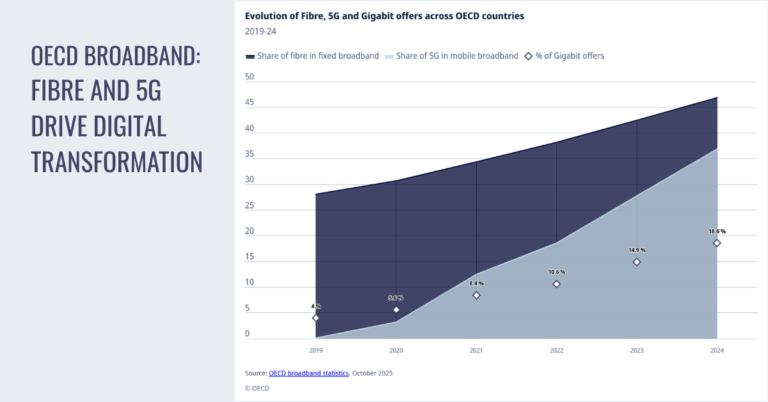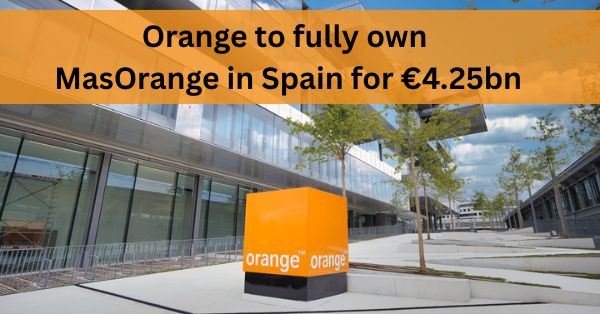Broadband Forum spec enables multi‑tenant 5G FWA for MDUs
A fresh technical report from Broadband Forum details how a single outdoor 5G Fixed Wireless Access connection can deliver gigabit broadband to multiple apartments by reusing a building’s existing wiring.
Architecture overview and key components
The document defines an architecture where one high-capacity 5G FWA modem—preferably operating on mmWave (3GPP FR2, roughly 24–40 GHz)—is installed on the roof or exterior of a multi‑dwelling unit (MDU) and then shared across many tenants.
Instead of running new fiber to every unit, the approach leverages in‑place infrastructure such as coaxial cabling, twisted pair, or legacy telephone wiring to distribute service from a centralized point (attic, basement, or telecom closet) to apartments.
The spec emphasizes efficient use of radio resources, unified operations, and tenant isolation, laying out management and demarcation models that fit existing operator processes.
Broadband Forum members leading this work include experts from Wistron NeWeb Corporation and Nokia, signaling strong vendor alignment around a repeatable, standards‑anchored design.
Why multi‑tenant 5G FWA for MDUs matters now
MDUs represent a large share of urban households, yet many buildings lack fiber or face retrofit constraints, leaving tenants capped below 1 Gbps or with few competitive options.
5G FWA has scaled quickly on sub‑6 GHz for coverage, but mmWave is needed to push multi‑gigabit tiers; the challenge has been mmWave’s weak penetration through walls and window coatings.
A shared outdoor CPE strategy sidesteps in‑unit radio limitations and turns stranded in‑building cabling into an asset, compressing deployment timelines and capex per passed door.
For operators, the timing aligns with capacity growth on 5G standalone cores, expanding FR2 footprints, and a tougher broadband competitive landscape in which cable and fiber are tightening their grip on MDUs.
5G FWA MDU architecture and deployment scenarios
The design places RF where it performs best, while using familiar in‑building distribution technologies and operational controls.
Rooftop mmWave backhaul to in‑unit gateways
An outdoor 5G FWA modem or small enclosure aggregates a high‑capacity mmWave link from a nearby 5G base station and terminates it as backhaul for the building.
From there, distribution options include Ethernet over existing Cat‑x, MoCA over coax, or G.hn over coax or phone lines, along with new Ethernet runs where feasible.
Per‑unit gateways or demarc devices provide Wi‑Fi, enforce QoS, and maintain logical separation so each tenant receives an individual service profile and billing relationship.
This pattern is especially attractive for mid‑rise and high‑rise assets where fiber retrofits are slow, expensive, or restricted by property owners.
Performance, QoS, and device management
mmWave capacity enables gigabit and multi‑gigabit tiers, but consistency depends on line‑of‑sight, rain fade mitigation, and careful rooftop placement with clear azimuth to the cell.
Traffic segmentation, per‑tenant QoS, and SLA monitoring can be integrated via established Broadband Forum frameworks and TR‑369/USP or TR‑069 style device management, preserving existing OSS/BSS flows.
Operators can map subscriber policies to VLANs or VRFs, implement per‑door rate shaping, and leverage 5G QoS flows for differentiated tiers and enterprise-grade add‑ons.
Business impact for operators and MDU owners
The spec reframes MDU broadband economics by converting a single RF link into many billable units without invasive construction.
Cost and rollout economics for MDU broadband
One outdoor CPE plus centralized distribution reduces truck rolls, simplifies permitting, and lowers cost per home passed versus unit-by-unit FWA installs or fiber rewires.
Opex benefits come from unified monitoring, fewer roof‑top devices, and standardized demarcation that streamlines trouble isolation and replacement.
For building owners, a single penetration and shared riser use minimize disruption, accelerate timelines, and enable bulk Internet or retail models without long construction windows.
Competitive positioning vs. cable and fiber
Where cable offers DOCSIS 3.1/4.0 and fiber is scarce or delayed, multi‑tenant 5G FWA becomes a credible gigabit alternative with faster time to revenue.
It also gives mobile operators a stronger fixed play in MDUs, and provides incumbents with a way to upgrade non‑fiber buildings while planning future fiber overlays.
Expect interest from carriers with mmWave deployments and dense urban footprints, including North American and Asia‑Pacific 5G leaders, as well as neutral‑host and managed Wi‑Fi providers.
Deployment challenges and risk mitigation
Execution hinges on RF engineering, building‑specific constraints, and rigorous tenant isolation and security.
RF design, line‑of‑sight, and resiliency
mmWave links require clear line‑of‑sight and margin for rain fade; design for dual‑sector or path diversity, and consider sub‑6 GHz fallbacks for resilience.
Roof rights, wind loading, grounding, and safety clearances need early coordination with property managers and compliance with local codes.
In‑building wiring considerations and distribution tech
Not all coax or twisted pair is equal; inventory cable types, splitter quality, and riser conditions to validate achievable rates and noise performance.
Choose distribution tech to match cable plant reality: MoCA excels on quality coax; G.hn is flexible across mediums; new Ethernet runs may be best for premium tiers.
Plan for power, space, and cooling at the aggregation point, plus battery backup where SLAs demand it.
Security, tenant isolation, and compliance
Implement strong logical separation (VLANs, per‑tenant tunnels), MACsec or equivalent on shared trunks, and per‑device certificates with secure onboarding.
Continuous monitoring, automated firmware updates, and role‑based access are essential to protect shared assets and maintain compliance.
Next steps for 5G FWA MDU deployments
The path forward is to translate the specification into repeatable designs, pilots, and procurement checklists.
Action plan for service providers
Build a reference design aligned to the spec, covering outdoor CPE, distribution media options, demarc devices, and end‑to‑end management and assurance.
Prioritize buildings with clear rooftop LOS, adequate in‑building wiring, and underserved tenants; negotiate master service agreements and roof access up front.
Define tiers, QoS, and SLAs; integrate device telemetry into OSS/BSS; and establish playbooks for installation, cutover, and support.
Action plan for vendors and integrators
Harden outdoor CPE for rooftop conditions, streamline mounting kits, and certify interoperable distribution options across MoCA, G.hn, and Ethernet.
Expose standards‑based management interfaces, pre‑integrate with TR‑369/USP controllers, and package per‑tenant isolation templates.
Metrics and KPIs to track
Track mmWave availability and utilization, per‑tenant throughput and latency, installation time per door, churn versus cable/fiber benchmarks, and service assurance MTTR.
As deployments scale, expect refinements to operational profiles and potential alignment with emerging 5G features for enhanced QoS and slicing in dense buildings.
Bottom line: Broadband Forum’s multi‑tenant 5G FWA spec gives operators a pragmatic blueprint to unlock gigabit service in MDUs quickly and at scale, using spectrum and assets they already own.








































